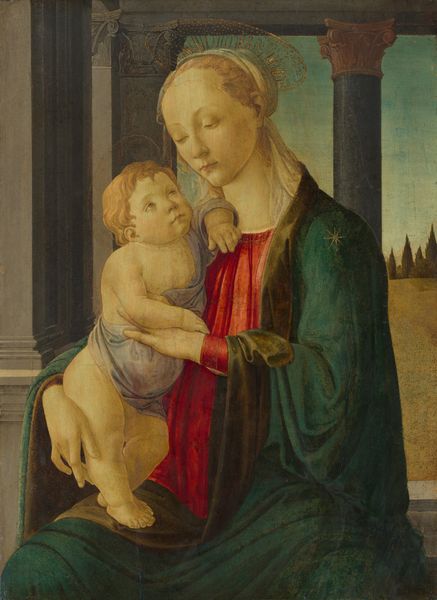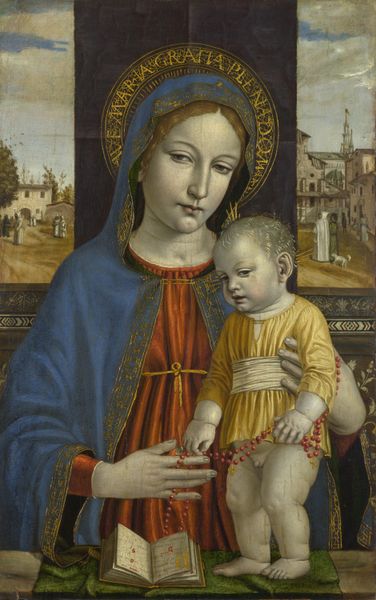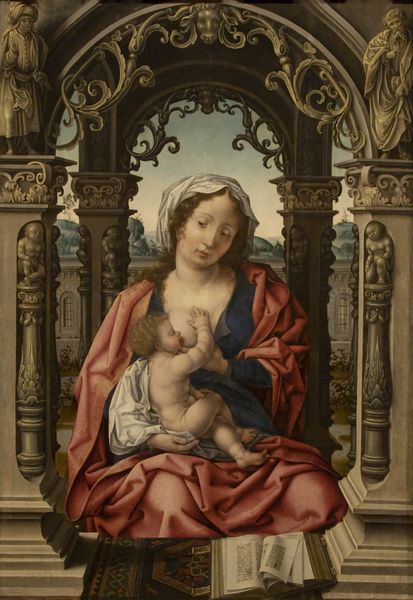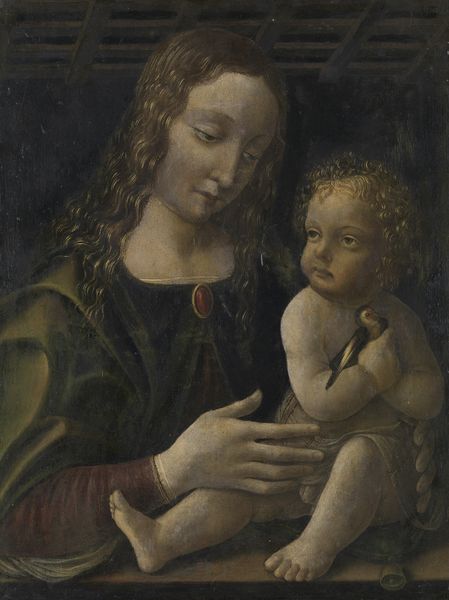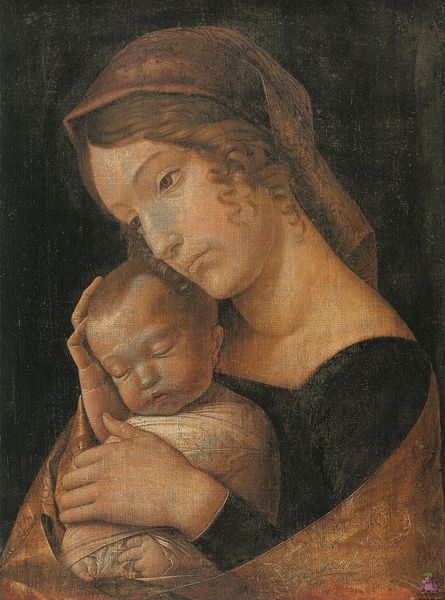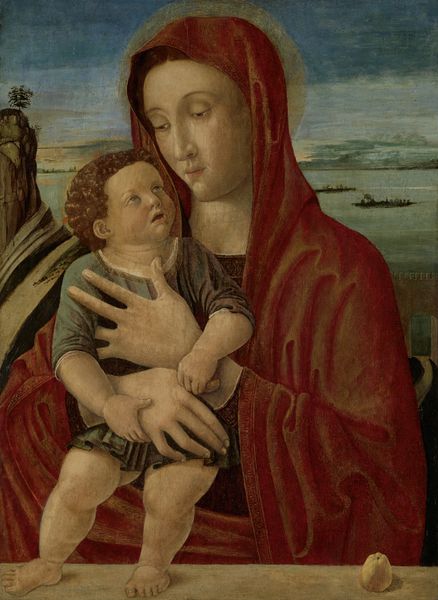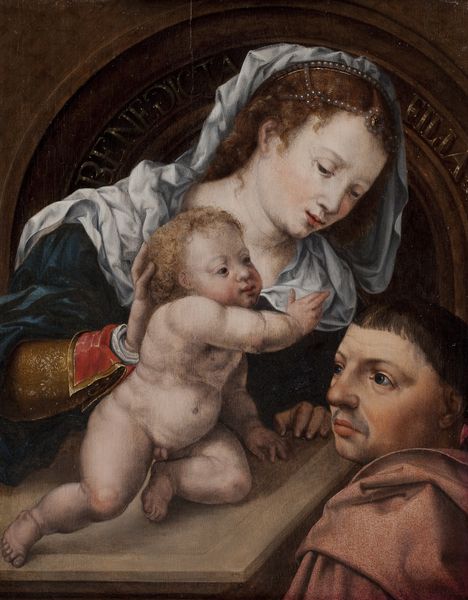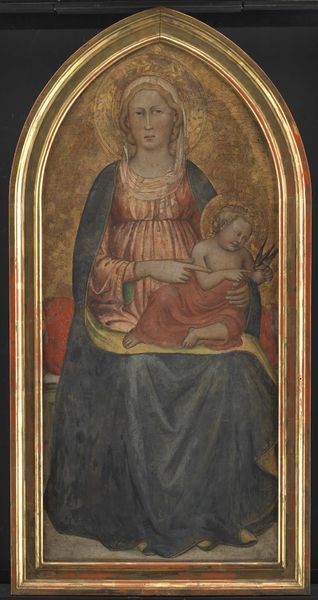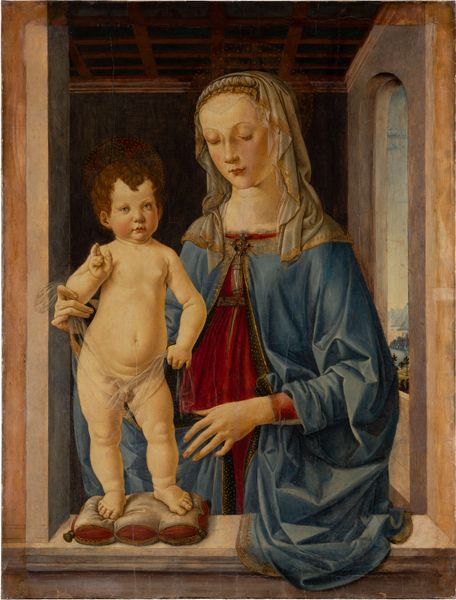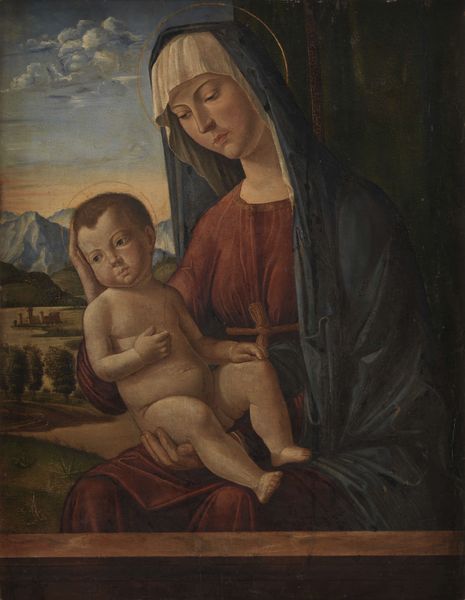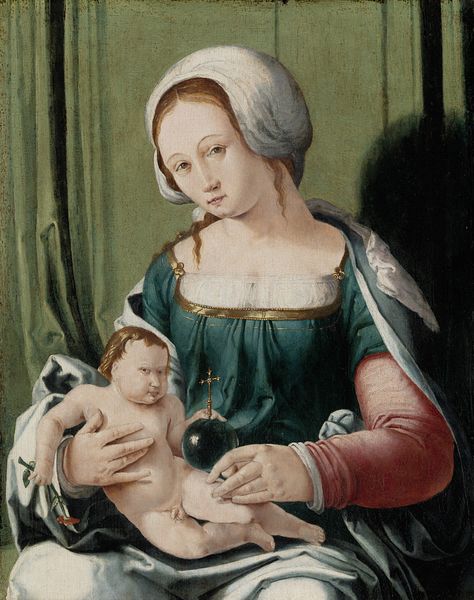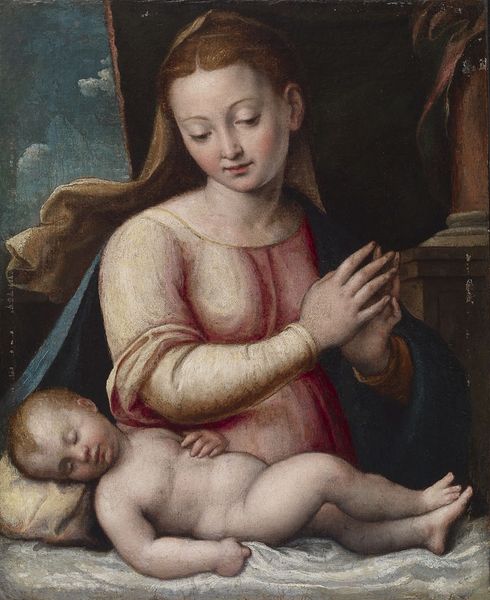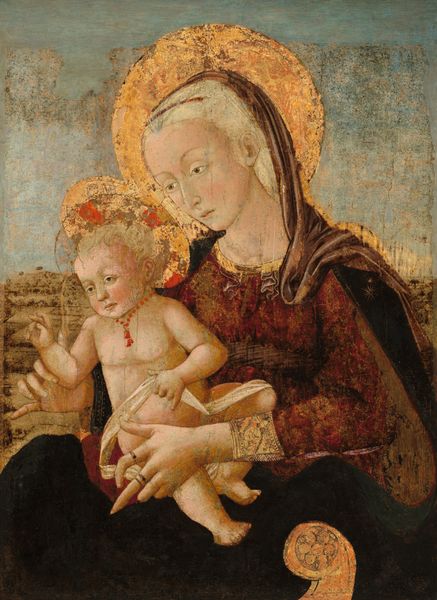
painting, oil-paint
#
portrait
#
high-renaissance
#
painting
#
oil-paint
#
figuration
#
oil painting
#
classicism
#
history-painting
#
italian-renaissance
Dimensions: height 90 cm, width 105 cm, depth 7 cm
Copyright: Rijks Museum: Open Domain
Pordenone painted this Virgin and Child in oil on panel in Italy sometime around the early 16th century. At the time, religious art served as a public demonstration of faith, but it also bolstered the status of wealthy patrons and ecclesiastical institutions. This image employs visual codes to convey meaning. The Virgin Mary is depicted with a halo, an attribute that signifies holiness. The pillars evoke classical architecture, linking Christian subjects to the authority of the Roman Empire. Looking at the fashion and architecture of the time, consulting religious texts, and studying the biographies of patrons help us understand the painting's intended audience and use. Art history reminds us that artworks reflect the specific beliefs, values, and power structures of the societies in which they were created. Historical context, therefore, is crucial to interpreting its meaning.
Comments
No comments
Be the first to comment and join the conversation on the ultimate creative platform.
